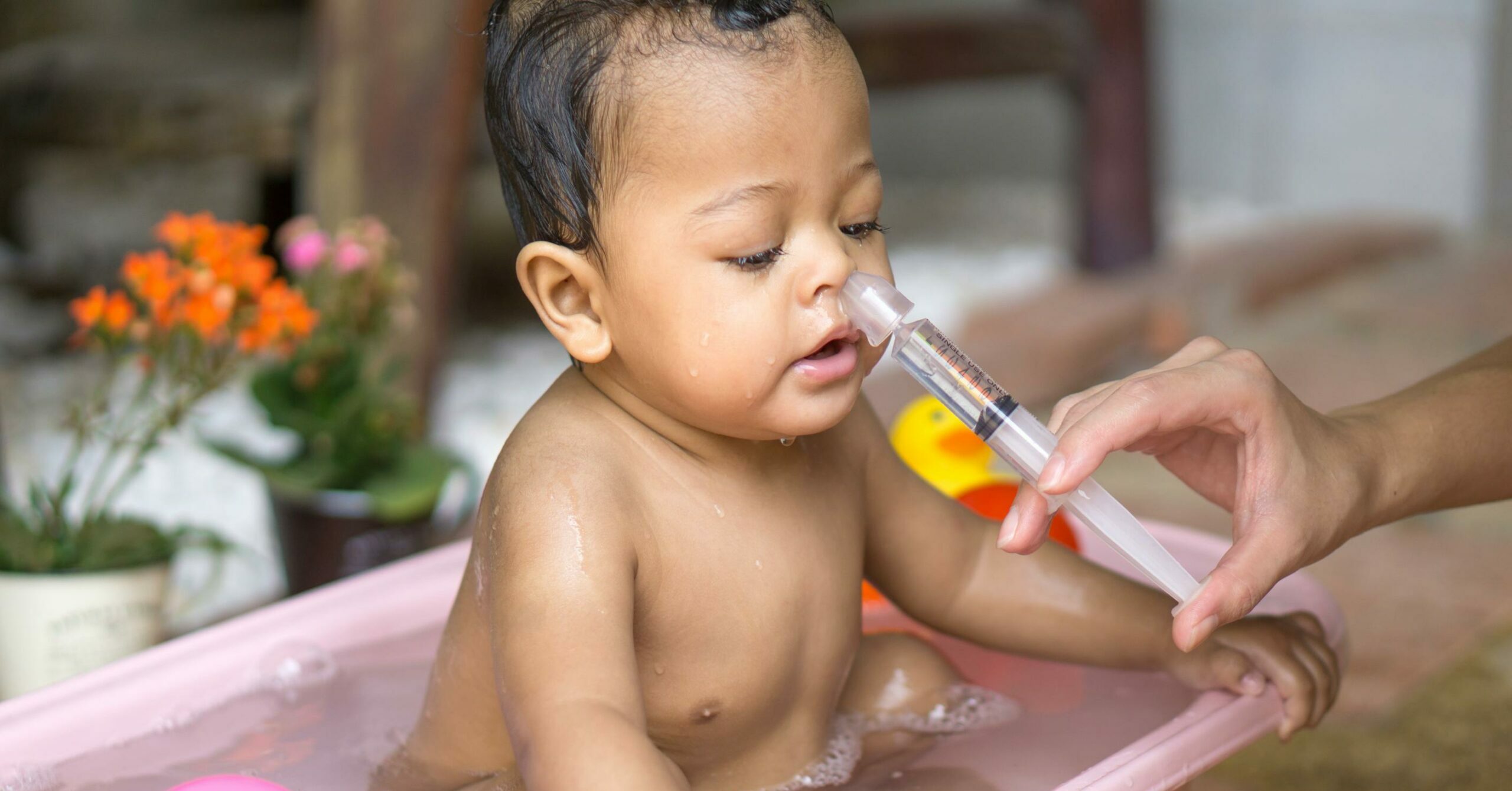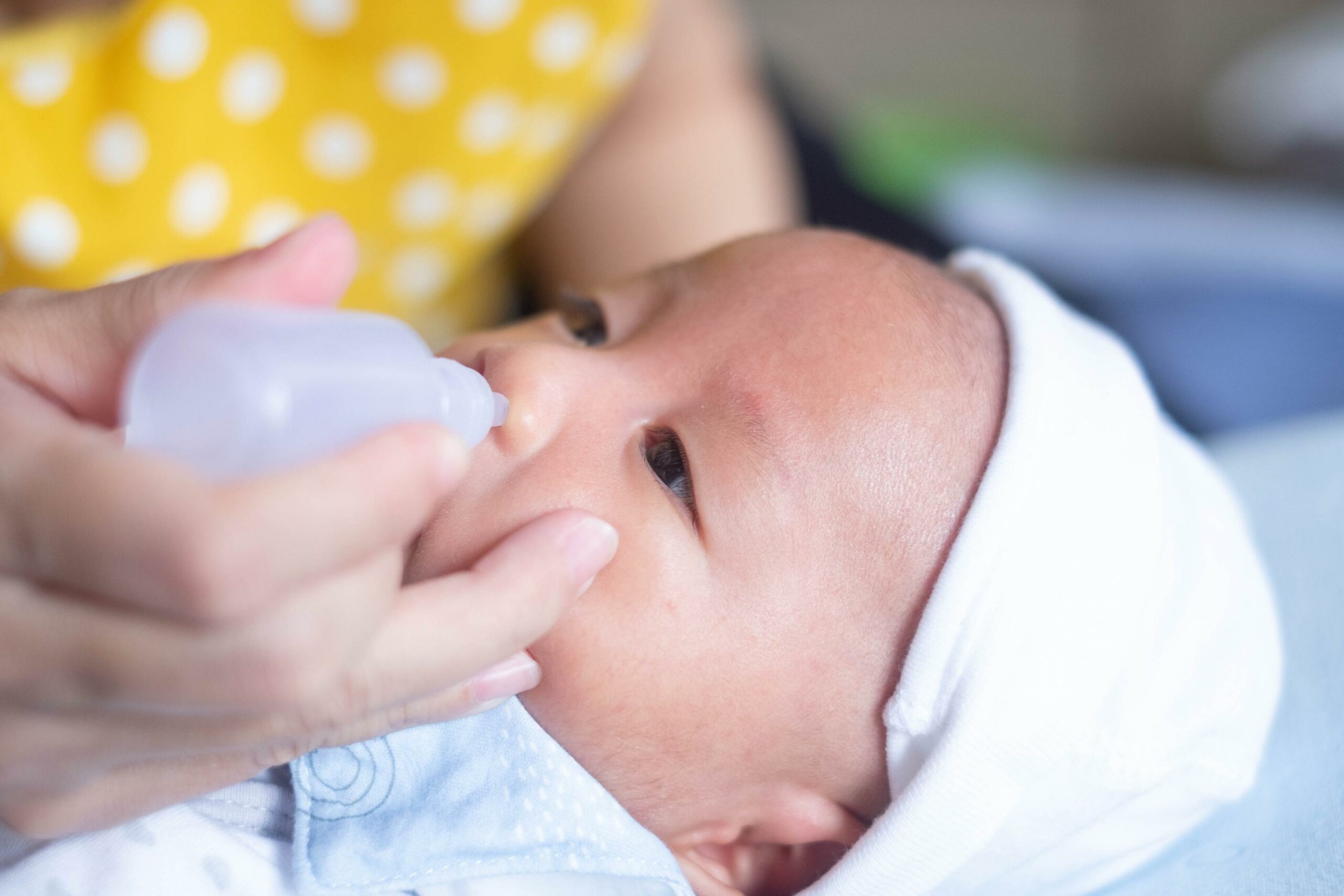
Caring for a newborn with nasal congestion can be challenging. Babies can’t blow their noses, so mucus buildup from colds, allergies, or dry air can make it hard for them to breathe, eat, and sleep. Fortunately, nasal irrigation—commonly known as a sinus rinse—offers a gentle and effective solution.
In this guide, you’ll learn everything you need to know about sinus rinsing for newborns and infants, including its benefits, safe techniques, potential risks, and when to consult your pediatrician. For more comprehensive guidance on newborn care, refer to our Newborn Handbook.
Why Sinus Rinsing is Beneficial for Newborns
Sinus rinsing helps address common nasal issues in newborns by:
- Clearing mucus and irritants.
- Easing congestion to improve breathing.
- Promoting better sleep and feeding.
- Reducing the risk of ear infections caused by prolonged blockage.
| Without Treatment | With Sinus Rinsing |
|---|---|
| Difficulty breathing | Clearer nasal passages |
| Interrupted sleep | Improved rest and comfort |
| Poor feeding habits | Easier feeding |
| Risk of ear infections | Reduced risk of complications |
“Many parents worry the first time they try a sinus rinse. Rest assured, it gets easier with practice. Over time, you’ll see just how effective it is in helping your baby breathe more comfortably.”
How to Perform a Sinus Rinse for Newborns
Step-by-Step Process
- Prepare the Equipment:
- Use a bulb syringe, infant-friendly squeeze bottle, or neti pot.
- Sterilize the device before each use.
- Fill it with sterile saline solution (store-bought or homemade).
Understanding Saline Solution
| Option | Instructions |
|---|---|
| Store-Bought | Convenient, pre-mixed, and safe for infants. Look for sterile saline labeled for babies. |
| Homemade | Mix 1 cup of distilled or boiled (and cooled) water with 1/4 teaspoon of non-iodized salt and a pinch of baking soda. |
Important: Avoid using tap water directly. It must be boiled and cooled to prevent harmful bacteria from entering your baby’s nasal passages.
1- Position Your Baby:
Lay your baby on their back or sit them upright with their head tilted slightly to the side.
Place a towel under their head to catch any solution or mucus.
2- Administer the Rinse:
Gently insert the nozzle into one nostril.
Slowly squeeze or pour the saline solution, allowing it to flow through the nasal passage and out the other nostril.
Use a tissue or bulb syringe to suction any excess mucus.
3- Repeat on the Other Nostril:
Switch sides and repeat the process for the other nostril.
4- Post-Care:
Wipe your baby’s face gently.
Clean and sterilize the equipment thoroughly after use.
For tips on managing water exposure in your baby’s ears, see our Water in Newborn Ears article.
Safety Considerations
To ensure safe and effective sinus rinsing:
- Use sterile equipment: Prevent infections by cleaning and sterilizing after each use.
- Limit frequency: Perform rinses 2–3 times daily during congestion to avoid nasal irritation.
- Position correctly: Keep the baby’s head slightly tilted to prevent fluid from entering the ears.
- Monitor reactions: Sneezing or mild discomfort is normal, but stop if your baby seems distressed.
“If this feels overwhelming, you’re not alone. Many parents find sinus rinsing intimidating at first, but it’s a simple and effective way to help your baby feel better.”
For a list of helpful resources and contacts, see our Helpful Resources page.
Consulting a Pediatrician
If it’s your first time attempting a sinus rinse, or if your baby has any of the following symptoms, consult your pediatrician for guidance:
| Symptoms | Potential Concern |
|---|---|
| Fever or signs of infection | May indicate a more serious issue. |
| Persistent crying or discomfort | Could mean the rinsing technique needs adjustment. |
| Worsening congestion or ear pulling | May suggest ear infections or complications. |
| Difficulty breathing | Needs immediate medical attention. |
Alternatives to Nasal Irrigation
If a sinus rinse isn’t suitable or needed, try these alternatives:
- Cool-Mist Humidifier: Adds moisture to dry air, easing nasal congestion.
- Saline Drops: Loosens mucus for easier removal with a bulb syringe.
- Steam Therapy: Sit with your baby in a steamy bathroom to loosen mucus.
- Hydration: Frequent feeding helps thin mucus naturally.
- Elevated Sleeping Position: Slightly raise the baby’s head for better drainage.
For additional educational materials on pediatric health, visit our Patient Education page.

Quiz: Test Your Knowledge on Baby Sinus Care
1. Why should you avoid using tap water for homemade saline solutions?
- A) It’s not sterile.
- B) It tastes bad.
- C) It’s too cold.
- Answer: A) It’s not sterile.
2. How many times a day can you safely perform a sinus rinse for a baby?
- A) 1–2 times.
- B) 2–3 times.
- C) 4–5 times.
- Answer: B) 2–3 times.
3. What is the best position for a baby during a sinus rinse?
- A) Lying on their side.
- B) Sitting upright with head tilted slightly.
- C) On their stomach.
- Answer: B) Sitting upright with head tilted slightly.
Conclusion
Sinus rinsing is a gentle and effective way to help your baby breathe easier during congestion. By following these safe techniques and exploring alternatives, you can provide your baby with relief and comfort.
Need Personalized Advice?
Schedule an appointment with East Lake Pediatrics to get personalized advice and hands-on guidance for managing your baby’s congestion. Our pediatric experts are here to help your little one breathe, eat, and sleep better.
Stay informed about current pediatric health trends by visiting our What’s Going Around page.
The information provided in this blog is for educational and informational purposes only. It is not intended as a substitute for professional medical, dental, or healthcare advice. Always consult with a qualified healthcare provider for diagnosis, treatment, and answers to specific medical questions.


My baby always keeps his mouth shut when doing it. Can it be dangerous for his ears if his mouth is closed? He really hates it, but we know it’s good for him.